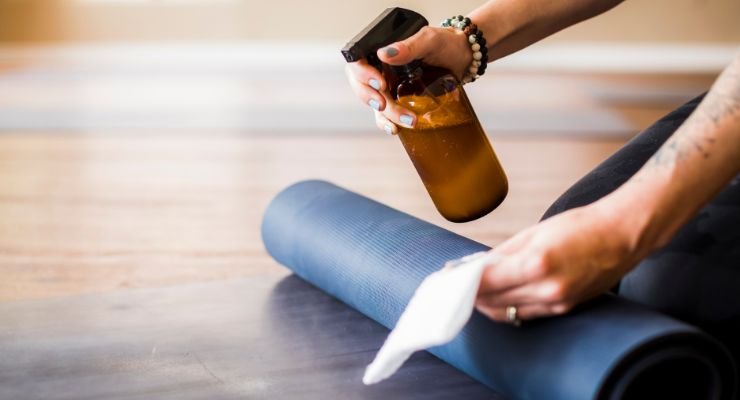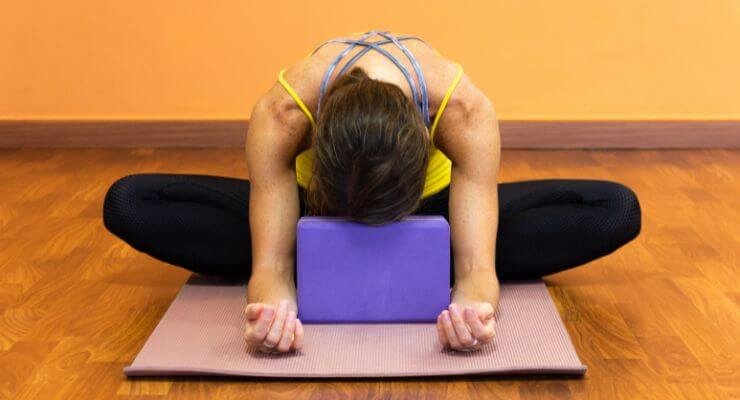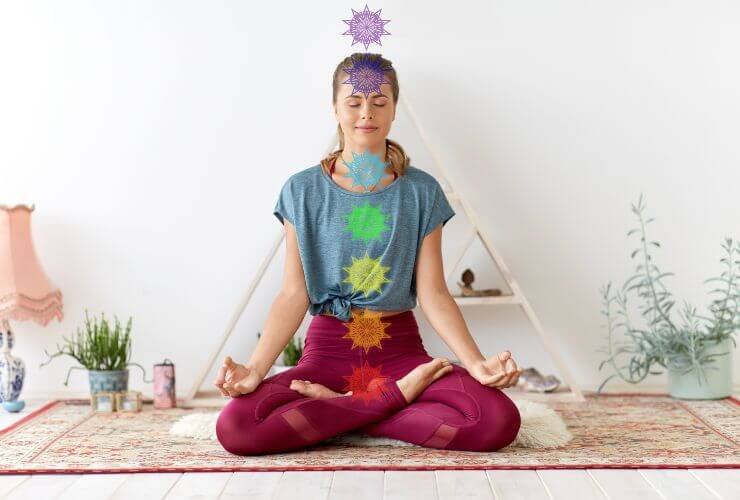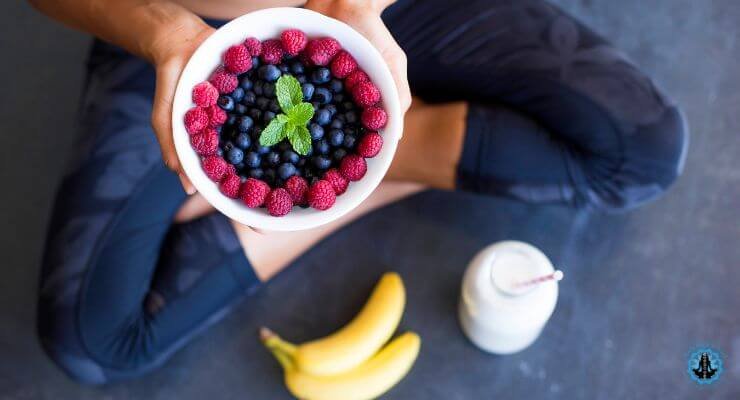Cleaning a yoga mat is an important part of maintaining a healthy and hygienic practice. A dirty mat can harbor bacteria, fungi, and other harmful microorganisms that can cause infections and skin irritations. While many yoga studios offer mat cleaning services, it’s still important to know how to clean your mat at home, especially if you practice regularly.
There are many different ways to clean a yoga mat, and the best method will depend on the type of mat you have and how dirty it is. Some mats can be machine washed, while others require more gentle cleaning methods. It’s also important to use the right cleaning products, as some harsh chemicals can damage the mat’s surface or cause skin irritation. By following some simple tips and tricks, anyone can learn how to clean their yoga mat effectively and safely.
Understanding the Importance of Cleaning a Yoga Mat
Yoga mats are an essential item for any yogi. They provide a comfortable and stable surface for practicing yoga poses. However, with regular use, yoga mats can accumulate dirt, sweat, and bacteria, which can be harmful to health. Therefore, it is essential to clean your yoga mat regularly.
Cleaning your yoga mat not only helps to remove dirt and sweat but also helps to maintain the grip of the mat. Over time, the surface of the mat can become slippery due to the accumulation of dirt and sweat. This can make it difficult to hold poses, leading to injuries. Regular cleaning can help to maintain the grip of the mat and prevent injuries.
Additionally, yoga mats are often shared in yoga studios, which can increase the risk of infections. Fungi and bacteria can thrive on the surface of the mat, leading to various infections and inflictions such as athlete’s foot, plantar warts, staph infections, ringworm, and more. Therefore, it is crucial to clean your yoga mat after each use to prevent the spread of germs.
Lastly, cleaning your yoga mat can help to extend its life. Yoga mats are an investment, and regular cleaning can help to maintain the quality of the mat. Dirt and sweat can cause the mat to deteriorate over time, leading to a shorter lifespan. Regular cleaning can help to prevent this and keep your mat in good condition for longer.
In conclusion, cleaning your yoga mat is essential for maintaining hygiene, preventing injuries, and extending the life of the mat. It is recommended to clean your yoga mat after each use to ensure that it remains in good condition.
What You Need to Clean a Yoga Mat
Cleaning your yoga mat after every use is crucial to maintain its hygiene and prolong its lifespan. Here are the things you need to clean a yoga mat:
Natural Cleaning Solutions
- Vinegar and Water Solution: Mix equal parts of water and vinegar in a spray bottle. Spray the solution on the mat and wipe it down with a clean cloth. Vinegar has antibacterial properties that can effectively disinfect your mat.
- Baking Soda and Water Solution: Mix 1 tablespoon of baking soda with 1 cup of water in a spray bottle. Spray the solution on the mat and wipe it down with a clean cloth. Baking soda can help remove any unpleasant odors from your mat.
- Essential Oil and Water Solution: Mix a few drops of your favorite essential oil with water in a spray bottle. Spray the solution on the mat and wipe it down with a clean cloth. Essential oils not only add a pleasant scent to your mat but also have antibacterial properties.
Commercial Cleaning Products
- Manduka Mat Renew: This all-natural cleaning spray is specially formulated to clean and restore your yoga mat. It is made with essential oils and is free from harsh chemicals.
- Gaiam Yoga Mat Cleaner: This cleaning spray is made with essential oils and is free from alcohol and other harsh chemicals. It effectively removes dirt, sweat, and bacteria from your mat.
- YogaRat All-Purpose Yoga Mat Wash: This cleaning spray is biodegradable and made with natural ingredients. It is free from harsh chemicals and can effectively clean and deodorize your mat.
It is important to note that not all yoga mats are created equal and some may require special care. Always check the care instructions provided by the manufacturer before cleaning your mat.
Daily Maintenance
Keeping your yoga mat clean is essential for maintaining its longevity and your health. Daily maintenance is an important part of this process and can help prevent the buildup of dirt, sweat, and bacteria on your mat. Here are a few tips for daily maintenance:
Wiping down your yoga mat after each practice
After each practice, take a moment to wipe down your yoga mat with a clean towel or cloth. This will help remove any sweat or dirt that has accumulated on the surface of your mat. You can also use a yoga mat cleaner or a mixture of water and vinegar to clean your mat.
Using a yoga mat towel or microfiber cloth
Using a yoga mat towel or microfiber cloth during your practice can help absorb sweat and prevent it from seeping into your mat. This can help prolong the life of your mat and prevent the buildup of bacteria. Additionally, using a towel or cloth can provide extra cushioning and grip during your practice.
Incorporating mindfulness into mat cleaning
Cleaning your yoga mat can be an opportunity to practice mindfulness and gratitude. Take a moment to appreciate your practice and the benefits it brings to your life. As you clean your mat, focus on your breath and the sensations in your body. This can help reduce stress and increase relaxation.
By incorporating these tips into your daily routine, you can help keep your yoga mat clean and hygienic. Remember to also clean your mat thoroughly on a regular basis to prevent the buildup of bacteria and dirt.
Step-by-Step Guide to Clean Your Yoga Mat
Cleaning your yoga mat is an essential part of maintaining its quality and longevity. A clean mat not only looks and smells better, but it also helps to prevent the growth of bacteria and fungi that can cause skin infections and other health problems. Here is a step-by-step guide to clean your yoga mat.
Pre-Cleaning
Before you start cleaning your yoga mat, it’s essential to remove any loose dirt, dust, or debris. You can do this by using a soft-bristled brush or a clean cloth to wipe down the surface of your mat. This pre-cleaning step will help to ensure that your mat gets a thorough cleaning and that you don’t spread any dirt or debris around during the cleaning process.
Deep Cleaning
For a deeper clean, you can use a cleaning solution to remove any sweat, oils, or other grime that may have accumulated on your mat. You can make your own cleaning solution by mixing equal parts water and white vinegar or water and mild dish soap. Alternatively, you can purchase a pre-made yoga mat cleaner from a sporting goods store or online retailer.
To apply the cleaning solution, spray it onto the surface of your mat and use a clean cloth or sponge to scrub it gently. Be sure to cover the entire surface of your mat, including the edges and corners. If your mat is particularly dirty, you may need to repeat this step several times.
Rinsing
After you’ve scrubbed your mat with the cleaning solution, it’s essential to rinse it thoroughly to remove any residue. You can do this by wiping down your mat with a damp cloth or sponge, or by rinsing it off in the shower or bathtub. Be sure to remove all of the cleaning solution from your mat, as any residue left behind can cause your mat to become slippery or sticky.
Drying
Once you’ve rinsed your mat, it’s time to dry it off. You can do this by laying your mat flat on a clean towel and rolling it up to remove any excess water. Then, unroll your mat and hang it up to air dry. Avoid exposing your mat to direct sunlight or high heat, as this can cause it to become brittle or discolored.
By following these simple steps, you can keep your yoga mat clean and in excellent condition for years to come. Remember to clean your mat regularly, especially if you practice yoga frequently or sweat heavily during your workouts. With a little bit of care and attention, your yoga mat can continue to support you in your practice for a long time.
Maintaining Your Yoga Mat
Regular Cleaning
It is essential to clean your yoga mat regularly to prevent bacteria, sweat, and dirt buildup. A dirty mat can cause skin irritation, bad odor, and even infections. Here are some tips for regular cleaning:
- Wipe down your mat after each practice with a clean cloth or towel.
- Use a yoga mat cleaner to remove sweat, dirt, and bacteria. You can either buy a commercial cleaner or make your own with water and essential oils.
- Avoid using harsh chemicals, such as bleach or ammonia, as they can damage the mat’s surface and cause discoloration.
- Allow your mat to air dry before rolling it up and storing it.
Proper Storage
Storing your yoga mat properly is just as important as cleaning it. Here are some tips for proper storage:
- Roll up your mat with the top side facing out to prevent creases and wrinkles.
- Avoid folding your mat as it can damage the surface and cause cracks.
- Store your mat in a dry and cool place away from direct sunlight, heat, and moisture.
- Use a yoga mat bag or strap to transport your mat to and from class.
By following these simple maintenance tips, you can prolong the life of your yoga mat and keep it clean and fresh for your next practice.
Common Mistakes to Avoid When Cleaning a Yoga Mat
Cleaning a yoga mat is an essential part of maintaining hygiene and extending its lifespan. However, there are some common mistakes that people make when cleaning their yoga mats. Here are a few things to avoid:
Using Harsh Chemicals
One of the most common mistakes people make is using harsh chemicals to clean their yoga mats. While it may seem like a good idea to use a strong disinfectant to kill bacteria, it can actually damage the mat’s surface. Harsh chemicals can break down the material, making it more prone to wear and tear. Instead, opt for natural cleaners like vinegar, baking soda, or tea tree oil, which are effective and gentle on the mat.
Not Drying the Mat Properly
Another mistake people make is not drying the mat properly after cleaning it. Leaving the mat wet can create a breeding ground for bacteria and mold. To avoid this, it’s important to air dry the mat in a well-ventilated area. Avoid exposing the mat to direct sunlight or heat, as it can damage the material. Hang the mat over a railing, on a clothesline, or on a hanger to dry it properly.
Using Abrasive Materials
Using abrasive materials like brushes or scouring pads can also damage the mat’s surface. These materials can scratch the mat and make it more prone to wear and tear. Instead, use a soft cloth or sponge to clean the mat. If you need to remove stubborn stains, use a gentle cleaner and let it sit for a few minutes before wiping it off.
Not Cleaning the Mat Regularly
Finally, not cleaning the mat regularly is a common mistake people make. Sweat, dirt, and bacteria can accumulate on the mat over time, making it unhygienic to use. It’s important to clean the mat after every use or at least once a week, depending on how often it’s used. Regular cleaning will not only keep the mat hygienic but also extend its lifespan.
By avoiding these common mistakes, you can ensure that your yoga mat stays clean, hygienic, and in good condition for years to come.
Special Care for Eco-Friendly Mats
Eco-friendly yoga mats are made from sustainable materials like natural rubber, cork, or jute. These materials are biodegradable and have a lower environmental impact than traditional yoga mats made from PVC or other synthetic materials. However, they require special care to maintain their quality and extend their lifespan.
Tips for cleaning natural rubber and cork mats
Natural rubber and cork mats are porous materials that can absorb sweat, dirt, and bacteria. To clean them, follow these steps:
- Wipe the mat with a damp cloth to remove any surface dirt or sweat.
- Mix a solution of water and gentle soap or a specially made yoga mat cleaner.
- Use a soft-bristled brush or sponge to scrub the mat gently.
- Rinse the mat with clean water and wipe it down with a dry towel.
- Hang the mat to air dry in a well-ventilated area, avoiding direct sunlight.
Avoid using harsh chemicals or abrasive scrubbers that can damage the mat’s surface or cause discoloration.
Caring for eco-friendly materials
Eco-friendly yoga mats are more sensitive to heat, moisture, and sunlight than synthetic mats. To prevent damage and extend their lifespan, follow these tips:
- Store the mat in a cool, dry place away from direct sunlight and heat sources.
- Avoid exposing the mat to extreme temperatures or humidity.
- Roll the mat loosely instead of folding it to prevent creases and cracks.
- Use a yoga mat bag or strap to carry the mat and protect it from dirt and moisture.
Avoiding damage to sustainable yoga mats
Sustainable yoga mats require extra care to avoid damage or premature wear and tear. Here are some common mistakes to avoid:
- Leaving the mat in a hot car or exposing it to direct sunlight for long periods.
- Using strong chemicals or bleach to clean the mat.
- Folding the mat or storing it in a cramped space.
- Using shoes or heavy equipment on the mat, which can cause scratches or tears.
By following these tips, you can keep your eco-friendly yoga mat clean, fresh, and in top condition for years to come.
Troubleshooting Mat Stains and Odors
Dealing with common mat stains (sweat, dirt, oils)
Yoga mats can accumulate a variety of stains from sweat, dirt, and oils over time. Here are some tips for cleaning common mat stains:
- Sweat: Use a mixture of water and vinegar or a gentle soap to clean sweat stains. Apply the solution to the stain and rub gently with a soft cloth. Rinse with water and let the mat air dry.
- Dirt: Vacuum or sweep your mat regularly to prevent dirt buildup. For stubborn dirt stains, use a gentle soap and water solution and rub gently with a soft cloth. Rinse with water and let the mat air dry.
- Oils: Use a mixture of water and vinegar or a gentle soap to clean oil stains. Apply the solution to the stain and rub gently with a soft cloth. Rinse with water and let the mat air dry.
Tackling persistent odors and mildew
If your yoga mat has a persistent odor or mildew, try these remedies:
- Baking soda: Sprinkle baking soda on your mat and let it sit for 5-10 minutes. Wipe the mat down with a damp cloth and let it air dry.
- Tea tree oil: Add a few drops of tea tree oil to a spray bottle filled with water. Spray the solution on your mat and wipe it down with a soft cloth. Let the mat air dry.
- Vinegar: Mix equal parts of water and vinegar in a spray bottle. Spray the solution on your mat and wipe it down with a soft cloth. Let the mat air dry.
Remedies for challenging stains and discolorations
For challenging stains and discolorations, try these remedies:
- Hydrogen peroxide: Mix equal parts of hydrogen peroxide and water in a spray bottle. Spray the solution on the stain and let it sit for 5-10 minutes. Wipe the mat down with a damp cloth and let it air dry.
- Lemon juice: Apply lemon juice directly to the stain and let it sit for 5-10 minutes. Wipe the mat down with a damp cloth and let it air dry.
- Salt: Make a paste of salt and water and apply it to the stain. Let it sit for 5-10 minutes and wipe the mat down with a damp cloth. Let the mat air dry.
Remember to always check your mat’s care instructions before using any cleaning solutions. With these tips, you can keep your yoga mat looking and smelling fresh.
Frequently Asked Questions
What is the best way to clean a closed cell yoga mat?
Closed cell yoga mats are made with a non-porous material, making it easy to clean. The best way to clean a closed cell yoga mat is to use a damp cloth or sponge with a mild soap and water solution. Avoid using harsh chemicals or abrasives that can damage the surface of the mat. Rinse the mat thoroughly with water and let it air dry.
How do I make my own non-toxic yoga mat cleaner?
Making your own non-toxic yoga mat cleaner is easy and affordable. You can mix equal parts water and vinegar in a spray bottle and add a few drops of essential oils like tea tree, lavender or peppermint for a pleasant scent. Alternatively, you can mix water and baking soda to create a paste and apply it to the mat with a damp cloth.
What is the best yoga mat cleaning spray?
There are many yoga mat cleaning sprays available on the market, but the best one for you will depend on your personal preference. Look for a cleaning spray that is specifically designed for yoga mats and contains natural ingredients. Some popular brands include Manduka Mat Renew, Aurorae Yoga Mat Wash, and Gaiam Yoga Mat Cleaner.
Can I put my yoga mat in the washing machine?
Most yoga mats are not designed to be machine washed, as the agitation and heat can damage the mat. However, some mats may be machine washable, so it’s important to check the manufacturer’s instructions before attempting to wash your mat in the machine. If your mat is machine washable, use a gentle cycle with cold water and a mild detergent. Hang the mat to air dry.
How do I disinfect my yoga mat?
To disinfect your yoga mat, you can use a solution of water and vinegar or a natural disinfectant spray. Spray the solution onto the mat and let it sit for a few minutes before wiping it down with a clean cloth. Alternatively, you can also use a steam cleaner to disinfect your mat. Be sure to let the mat dry completely before rolling it up for storage.
What can I use to clean my rubber yoga mat?
Rubber yoga mats require special care to avoid damage. To clean a rubber mat, use a damp cloth or sponge with a mild soap and water solution. Avoid using harsh chemicals or abrasives that can damage the surface of the mat. Rinse the mat thoroughly with water and let it air dry. You can also use a natural rubber mat cleaner like Manduka’s Mat Renew.






Pingback: Savasana (Corpse Pose): How to do it and its benefits - YOGMAY
Pingback: Simhasana (Lion Pose): How to do it, its benefits and contraindications